Last week’s round-up;
08 – 12 June 2020

PREVENTING AND REMOVING DISINFECTANT RESIDUES
Disinfectant residues can pose various risks to a cleanroom environment, and there is renewed focus on best practice related to their prevention and removal. Current industry thinking is that any residual chemical is a potential contaminant to a process and possibly to product, and regulators are showing increased concern over residual disinfectants. This article gives an overview on why these residues matter, their main sources, and how to assess related risks. It also explains ways to tackle these residues, including through a routine residue removal program, instituting “low-residue” disinfectant formulations, and focusing on operator training to control application: https://bit.ly/RealCMC-2C3DzqB
EMAs SME OFFICE HAS ISSUED THEIR 2019 ANNUAL REPORT
The EMA’s SME office has just issued their annual report for 2019. It makes for interesting reading. Some of the highlights include the highest ever number of registered SMEs with 12% created over the last 3 years. Product pipelines include 27% Orphan Medicines, 10% advanced therapies, 12% paediatric medicines and 25% generic medicines. Noteworthy too is the number of positive PRIME eligibility recommendations of 7 out of 16.
The report in full can be found here: https://lnkd.in/dBwma4D
NEW EMA GUIDANCE: COVID-19 REMOTE GCP INSPECTIONS
The EMA has just issued new guidance on remote GCP inspections during the COVID19 pandemic. The inspection team, in agreement with the CHMP requesting the inspection, should make a case-by case decision on whether a remote inspection is considered appropriate and feasible. It too is assumed that Sponsors, CROs and service providers (e.g. medical imaging, central laboratories) have at their disposal advanced technologies, electronic systems and virtual working environments which facilitate remote staff or company locations worldwide to communicate systematically. These technologies may allow the necessary access for inspectors to the relevant systems (e.g. electronic trial master file (eTMF)) remotely and enable appropriate communication settings during inspection. The guidance covers initiation, preparation (setting, team location, technical requirements, agenda), conduct and reporting process.
The full document is available here: https://bit.ly/RealRegulatory-3d27qfS
EMA Q&A ON PROPORTIONALITY IN MULTIPLE STRENGTHS OF FIXED COMBINATIONS
The EMA has published a new ‘Clinical pharmacology and pharmacokinetics Q&A’ regarding biowaivers (Q&A 6.4) in fixed combination oral solid dosage forms. The EMA Guideline on the investigation of bioequivalence (CPMP/EWP/QWP/1401/98 Rev.1) allows for a biowaiver in multiple strength applications of fixed combinations as long as the applicant can demonstrate quantitative proportionality between the strengths. However, deviations from the quantitatively proportional composition are still considered acceptable under certain conditions. This extremely useful new Q&A provides clarification on these conditions and it also includes various examples.
Further information is available here: https://bit.ly/RealCMC-30oSmGp
EMA ISSUES A LEAFLET OUTLINING FAST TRACK PROCEDURES FOR COVID-19 TREATMENTS AND VACCINES
EMA has just issued a neat 1-page leaflet describing their preparedness to support the development and marketing authorisation of safe, effective and high-quality therapeutics and vaccines against COVID-19. The Agency has put in place rapid review procedures related to COVID-19 to deliver assessments of high-quality applications from sponsors in the shortest possible timeframes.
The leaflet can be found here: https://lnkd.in/d4zwKiB
EMA REGULATORY SCIENCE STRATEGY TO 2025 PUBLISHED ON THE NATURE SITE
This morning I was reading a very interesting commentary on the EMA Regulatory Science strategy to 2025 published on the Nature site. The article spoke to the core recommendations that stakeholders deem the most significant to advance evidence generation for medicines, including fostering innovation in clinical trials, reinforcing patient relevance in evidence generation, use of high quality real-world data in decision making, developing the regulatory framework for emerging data sources and contributing to HTAs’ preparedness and downstream decision-making for innovative medicines.
The article in full can be found https://www.nature.com/articles/d41573-020-00032-0
PIC/S ADOPTS NEW CROSS-CONTAMINATION AND HBEL GUIDANCE
As of June 1st 2020, two new Pharmaceutical Inspection Co-Operation Scheme (PIC/S) guidance documents have entered into force: Questions and Answers on Implementation of Risk-based Prevention of Cross-contamination in Production and ‘Guideline on Setting Health-Based Exposure Limits for Use in Risk Identification in the Manufacture of Different Medicinal Products in Shared Facilities’, and an aide-memoire on health-based exposure limit (HBEL) assessments. The Q&A guidance on cross-contamination fully mirrors the EMA’s guideline of the same name except for an additional references section that points to other PIC/S guidelines. Whereas the HBEL guidance document “describes an approach to assessing HBEL that can be conducted by inspectors without specialised toxicology knowledge”.
Further information about these new guidance document may be found here: https://bit.ly/RealCMC-30ium7A

